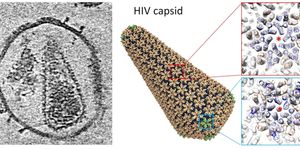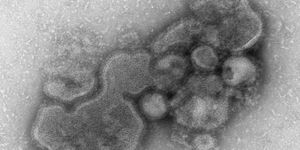A New Treatment Option for Patients with Cancer in the Eye
Uveal melanoma (UM) is a rare malignancy characterized by the formation of cancer cells in the tissues of the eye. UM begins in the cells that make melanin, the dark-colored pigment in the eye's middle layer.
The uveal includes three components, the iris, the ciliary body, and the choroid. Cancer can form in any of these areas, and tumor progression and patient prognosis vary depending on the location where cancer develops.
The iris is the colored part of the eye. UM starting in the iris is generally a slow growing, small tumor. UM of the iris does not typically spread to other organs.
The ciliary body sits behind the iris. It consists of a ring of tissue and muscles that changes the shape of the eye lens, allowing the eye to focus. UM forming in the ciliary body is often large and likely to metastasize.
The most common location for UM to develop is in the choroid, the layer of blood vessels that provide oxygen and nutrients to the eye. Like UM of the ciliary body, UM of the choroid often consists of large tumors which can metastasize.
One-year survival for metastatic UM patients is about 50%, and there is a need for novel treatment options demonstrating an overall survival benefit. However, a recent study published in the New England Journal of Medicine presents exciting data supporting extended survival for UM patients.
Participants were randomly assigned to treatment and control groups. Since there is no standardized treatment for UM, the control group received different types of chemotherapy or immunotherapy. The treatment group received a bispecific protein called tebentafusp.
Tebentafusp is created by fusing parts of two different genes together. In the case of tebentafusp, a gene that targets the T cell receptor is fused to a gene that targets cells expressing a protein called glycoprotein 100, which is specific to melanoma. By generating one drug that targets both T cells and melanoma cells, the treatment brings tumor-killing immune cells in close contact with melanoma cells.
The study enrolled 378 patients and randomly assigned them to the tebentafusp group (252 patients) or the control group (126 patients). Overall survival at one year exceeded 70% for patients treated with tebentafusp compared to nearly 60% in the control group. Progression-free survival for the tebentafusp group measured 31%, significantly higher than that in the control group.
There were some reported adverse associated with tebentafusp, including skin-related events. Fortunately, these toxicities decreased after a few doses, and in only 2% of patients, the adverse events warranted treatment discontinuation.
Overall, this study presents promising data for patients with UM. The advances presented in this report have great potential to benefit patient survivorship significantly.
Sources: UM, survival, New England Journal of Medicine, Tebentafusp, targets









